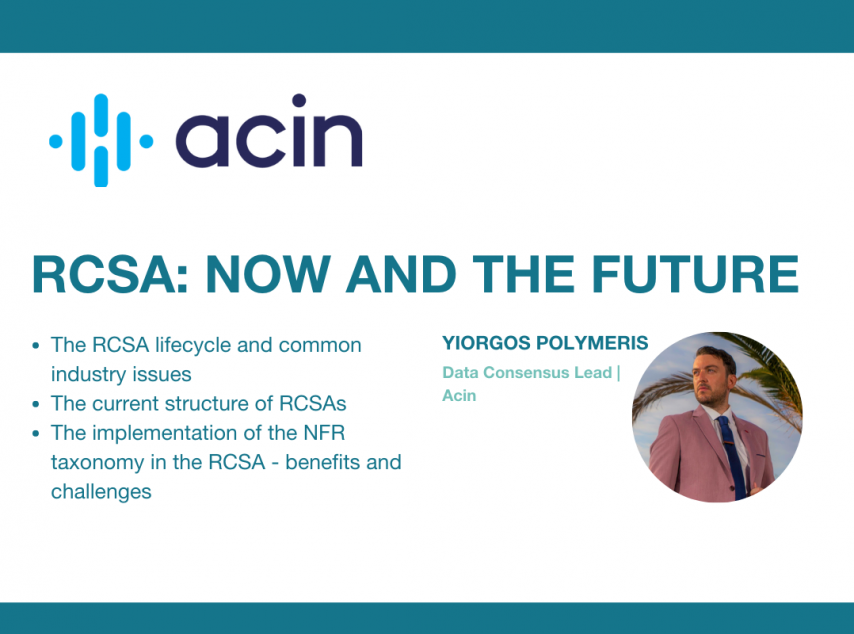
Event
Webinar: RCSA – Now and the future with Yiorgos Polymeris
Scrutiny over how financial firms are preparing for climate change is intensifying from all directions—from regulators to stakeholders, including customers, investors, activists, the media and employees. In this second of a five-part blog series on climate risk, we assess how prepared financial institutions are to mitigate risks from climate change. We also offer some key practical steps that accountable senior managers can be taking to accelerate their climate risk readiness and get on the front foot with regulators.
As The Bank of England’s Prudential Regulation Authority (PRA) Dear CEO Letter recently underscored, while some firms have made good progress on climate risk, many firms are lagging. The PRA said it will pay particular attention to how firms quantify climate-related risks and how they incorporate those risks into business strategies, decision-making, and risk-taking. Financial institutions know they have work to do. According to independent research commissioned by Acin, 83% of firms highlight climate risk as a major topic in their most recent annual reports, while two-thirds of firms have published a net-zero target. Yet firms have been slow to execute. Only 37% of organizations believe they have a mature approach to climate risk management, while fewer than one in five firms publish detailed data on climate risk.
A snap Acin poll in February found that more than half of respondents would describe their organization’s preparedness to tackle climate risk as either basic or in progress. Fewer than a quarter said they are well-prepared.
Given that backdrop, here are four practical solutions to help organizations better prepare for the climate risk challenge:
Many firms might have started thinking about climate risk, but it is time to move beyond high-level, box-ticking exercises such as long-term net-zero pledges and glossy reports promoting their green credentials. Instead, the focus should now be on detailed implementation and framework building. There is no room for delay. The PRA says it will start folding supervision of climate-related financial risks into its supervisory approach from this year. Firms should remember the challenges of adopting the European Union’s General Data Protection Regulation (GDPR) when some institutions dragged their feet and were forced to rush to meet the deadline.
Senior managers need to understand how climate fits into their organization’s existing risk framework. Most large firms will already have sophisticated frameworks around trading or cyber risk, for instance, but few firms will yet have anything as comprehensive in place for climate risk. That means firms need to start building their climate risks framework—from the policies and procedures to the reporting mechanisms and governance—and then ensuring it is compatible with their wider risk framework.
Get your climate-related risks and controls data in order. We have identified more than 80 climate-related risks and controls that need to be considered for a climate risk framework to be effective, from regulation, legislation and litigation to reporting and disclosure risk. This is where it is vital senior managers roll up their sleeves and dig into the finer detail so they can build up a complete risk and control inventory that captures the full range of climate risks that will impact across their whole organization.
Understanding where your organization is relative to your peers is also critical. Climate risk is increasingly being viewed as a systemic risk, so just as firms share data on cyber threats, organizations need to start sharing climate risk data with their peers to ensure all firms are ready to face the challenge. Given how interconnected the financial system is, there is a potential domino effect to climate risk, meaning there is no point being market leaders if all of your peers are failing. By using a repeatable, scalable, digital platform, firms can benchmark themselves against their peers on an ongoing basis and ultimately get a better handle on what good looks like and help reduce systemic risk.
For more information on climate-related risk management, click here. Stay tuned next month for the third part in our climate risk series looking at how chief risk officers are responding to the challenges of climate change.